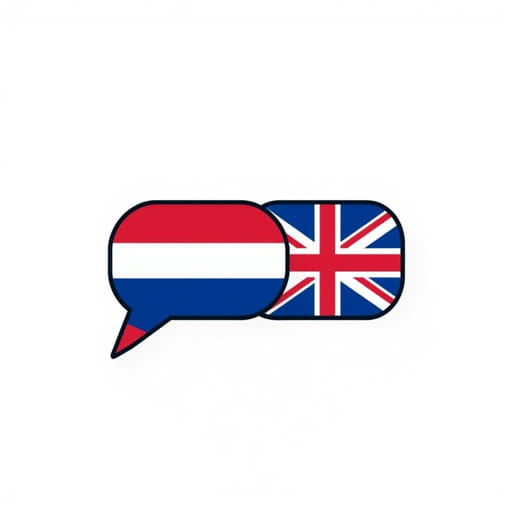Translating Dutch to English can be a rewarding yet challenging task. Although the two languages share some common roots due to their Germanic origins, significant differences in vocabulary, grammar, and idiomatic usage mean that a word-for-word translation often misses the mark. Whether you are translating documents, websites, or casual conversations, understanding the nuances of both languages is crucial. From grasping sentence structures to recognizing false friends, a comprehensive strategy is essential to achieve accurate Dutch-to-English translations that are clear and contextually correct.
Understanding the Basics of Dutch and English
Language Structure and Syntax
Dutch and English share some syntactic similarities, but they differ significantly in sentence construction. For example, Dutch places verbs at the end of subordinate clauses, while English keeps them close to the subject. A basic understanding of Dutch syntax will help you restructure sentences naturally when translating them into English.
False Friends and Literal Translation Pitfalls
One of the biggest challenges in Dutch-to-English translation is dealing with false friends words that look or sound similar but have different meanings. For instance, the Dutch word ‘eventueel’ does not mean ‘eventually’ but ‘possibly.’ Literal translation often results in awkward or incorrect phrases, so context must always guide your choices.
Tools and Resources for Dutch to English Translation
Online Dictionaries and Translation Platforms
Reliable online dictionaries like Van Dale and translation platforms like DeepL and Google Translate can assist with vocabulary and short phrases. However, always cross-check translations, especially for idioms or technical content, as machine translation is prone to errors in tone and nuance.
Grammar Guides and Language Courses
Utilizing grammar guides specific to Dutch-English translation can help you understand rules such as word order, verb conjugation, and noun gender. Online courses and apps like Duolingo, Babbel, or even YouTube tutorials offer structured language learning that reinforces translation skills.
Translation Memory Tools
For those translating in a professional context, translation memory (TM) tools such as SDL Trados or MemoQ are valuable. These platforms save previously translated segments, allowing for consistency in terminology and faster output for repetitive content.
Steps to Translate Dutch to English Effectively
1. Read the Entire Dutch Text First
Before translating, read through the full Dutch text to understand its general meaning, tone, and intent. Pay attention to any cultural references, idiomatic phrases, or technical terms that may require additional research.
2. Break Down the Sentence Structure
Analyze the sentence elements subject, verb, objects, and modifiers. Dutch often uses compound and separable verbs that may not translate directly. Reordering words to match natural English flow is often necessary.
3. Translate in Context
Always keep the broader context in mind. A word can have multiple meanings depending on how it’s used. For instance, bank can mean both bench and bank (financial institution) in Dutch. The surrounding words will guide the correct choice.
4. Use Idiomatic Equivalents
Dutch idioms rarely make sense when translated word-for-word. Replace Dutch idioms with English equivalents that convey the same meaning, rather than their literal form. For example, de kogel is door de kerk (the bullet has gone through the church) is better translated as the decision has been made.
5. Edit and Proofread the English Output
Once your initial translation is complete, edit for grammar, punctuation, and clarity. Read the English version aloud to ensure it sounds natural. Proofreading is essential to eliminate errors that can arise during translation, especially in longer texts.
Common Challenges in Dutch-to-English Translation
Word Order and Verb Placement
In Dutch, verbs can be split or placed at the end of a sentence, especially in subordinate clauses. For example, Hij zei dat hij het boek zou lezen literally translates to He said that he the book would read, but should be translated as He said that he would read the book. Awareness of this structural difference is key.
Gender and topics
Dutch uses gendered topics de and het which do not always have direct English counterparts. Understanding whether a noun is common or neuter can help avoid confusion when interpreting pronouns and possessives in longer texts.
Compounded Words
Dutch often combines words into long compounds, such as verzekeringsmaatschappij (insurance company). These words should be broken down carefully and translated into natural English terms, sometimes requiring rephrasing or expansion.
Regional Variants and Slang
The Dutch language has regional variations and slang that may not appear in standard dictionaries. Flemish (Belgian Dutch) includes words and expressions not commonly used in the Netherlands. Translators should consider the origin of the text and adjust accordingly.
Tips to Improve Dutch to English Translation Skills
- Practice regularlyby translating short texts like news topics, advertisements, or social media posts.
- Read in both languagesto build vocabulary and get a feel for sentence flow and idiomatic expressions.
- Join translation forumsor communities to get feedback and learn from others.
- Watch bilingual mediasuch as Dutch TV shows with English subtitles or vice versa to compare language use.
- Build a personal glossaryof frequently used words, phrases, and expressions for quick reference.
When to Rely on Human Translators
While machine translation can be helpful for informal use or simple texts, professional human translators are essential for legal documents, marketing material, academic writing, and nuanced literature. Human translators bring cultural context, emotional tone, and idiomatic precision that machines cannot replicate fully.
Choosing a Professional Translator
If you need professional help, look for translators certified in Dutch-English translation, ideally with experience in your specific field. A good translator will ask for context, clarify uncertainties, and provide revisions as needed.
Learning how to translate Dutch to English requires more than just bilingual knowledge. It involves mastering grammar rules, understanding cultural context, recognizing common translation traps, and refining your English writing style. With the right tools, consistent practice, and a strong attention to detail, anyone can improve their translation abilities. Whether you’re translating for personal growth, business, or academic purposes, the key to success is accuracy, clarity, and respect for the meaning behind the words.
